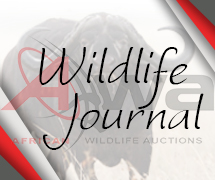Mohair in South Africa
Angora Goats being herded to their pen in the Camdeboo area of the Eastern Cape.
The small Angora goat is originally from the Middle Eastern region of Turkey. The first animals - one doe (female) and 12 bucks (male) - were imported to South Africa in 1838, but it was found that all the bucks were rendered sterile. Fortunately, the doe was pregnant and gave birth to a ram kid. More animals were imported to South Africa between 1857 and 1868 until the sultan of Turkey stopped exports. The Angora Goat Breeders' Society was established in 1892 and is known today as the Angora Ram Breeders.
Mohair is produced on approximately 1000 Angora goats farms around South Africa. There are about 700 farms big enough to be considered ‘commercial producers', while the remaining 300 are smaller producers. Once the goats have been shorn the hair is taken to Nelson Mandela Bay by the brokers who sell the fibre (hair) at auction.
Mohair from across South Africa, is brought to Nelson Mandela Bay (Port Elizabeth area in the Eastern Cape province) where it is processed. Port Elizabeth harbour is the only port exporting mohair from South Africa.
Textiles from Goats
The difference between wool (left) and mohair (right) can be clearly seen here.
Angora goats in South Africa are bred for mohair production. Mohair is a strong elastic fibre that is warm, lightweight and durable, and can be easily dyed. It is mainly used in the textile industry for clothing, knitwear (hand and machine knitting), curtaining, upholstery material, and blankets. Mohair is different from wool in that it has a much smoother surface and a very thin, smooth scale.
An Angora goat can produce up to 5 kg of mohair and needs to be sheared twice a year as it grows between 12 - 15 cm every six months.
Angora fleece should be uniform with regard to length and fineness, it should show a good lustre, solid style and good character and be free from coloured and kemp fibres. (Kemp fibres are white, brittle weak fibre often mixed in with the normal fleece of an animal.)
Quality mohair comes in two basic styles - spiral-shaped and flat wavy locks - and is typically sold in three grades: fine, medium and strong. The grade is determined largely by the age of the Angora goat.
Mohair production is often combined with the production of goat meat to ensure cash flow throughout the year. Meat quality from young goats is of a good quality but the carcasses are smaller and thinner than those of sheep that have been fed in a similar manner.
This goat is shedding cashmere, a soft fine fiber that grows in winter.
Cashmere, produced from the soft inner hair of a goat’s coat, is produced on a small scale from iMbuzi goats near Butterworth in the Eastern Cape. Over 300 small farmers collect the inner hair of the goat’s coat. This is bought by Ivili Loboya and processed into textiles and garments. Most indigenous goats grow cashmere between their hair in the cold winter season to protect them, in summer they shed this woolly cashmere.
Mohair Production and Marketing
An Angora goat can produce up to 5 kg of mohair per year.
An Angora goat is shorn every 6 months. The average fleece weight varies depending on the age of the goat; kids fleece will be about at 500g at first shearing compared to adults fleece weighing around 2 kg. After shearing, the fleece is sorted, packed and clearly marked with contact details and producer number.
Marketing of Mohair
Small-scale Angora goat farmers can make use of communal shearing points but commercial farmers arrange with a shearing team to visit their farms during shearing time. After shearing, mohair is classed according to length, strength and texture, packed in bales and marked with a producer number and the quality class. Each registered South African mohair producer has a producer number. Individual bales can weigh up to 150 kg.
Small-scale farmers should keep records of their individual contribution to a bale to get paid for that. Bales are transported to the broker, who will market the mohair and sell it on auctions, held about 14 times per year at the Wool and Mohair Exchange in Port Elizabeth. Bales will be separated into lots and samples of each lot will be presented to buyers. A buyer will buy a ‘lot' of the raw fibre (also called ‘greasy’) and will then process it further. Processing of mohair includes sorting, scouring (Washing), carding, combing, spinning, dyeing, weaving or knitting and finally, finishing.
Buyers for South African production make up about 5% while 95% of mohair is sold for export. South Africa's three largest export countries are China, Italy and Taiwan. Currently (2018) there are five main buyers, three brokers and approximately 30 manufacturers.
A wide variety of mohair products are produced in South Africa including socks, blankets, duvets, scarves, as well as a range of other clothing and décor items. Abroad, mohair is used by high-end fashion labels to manufacture luxury suits and other fashion items. Mohair South Africa supplies market information to Angora goat farmers and the industry.
Mohair Statistics in South Africa
Mohair is produced in dry areas of the USA and Australia as well as in Lesotho, but South Africa produces about 53% of the world's mohair production. The gross value of mohair production was about R529 million in 2015. Production for 2015 (2 500 tons) was a substantial decline compared to 2006 production figures of about 3 700 tons. A big contributor to this decline was the severe drought experienced in a large part of the production areas of the Eastern Cape Province. In 2006 the price of mohair was R78/kg compared to 2018 when the price reached R250/kg.
Problems with Mohair Production
South Africa is still (2018) under major pressure from the persisting drought across large parts of the mohair producing regions. Some areas have received some much-needed rain, but a number of producers are still spending massive amounts of money on supplementary feed (and transporting it) to sustain their animals. However, there is still good demand for mohair and the markets have been stable over the last few auctions.
Some other challenges in the South African mohair industry include insufficient quantities of raw material to arrive on the right time, high replacement costs of processing machinery, limited textile knowledge and skills as well as inflexible labour legislation to accommodate seasonality of production.
By Marinda Louw








